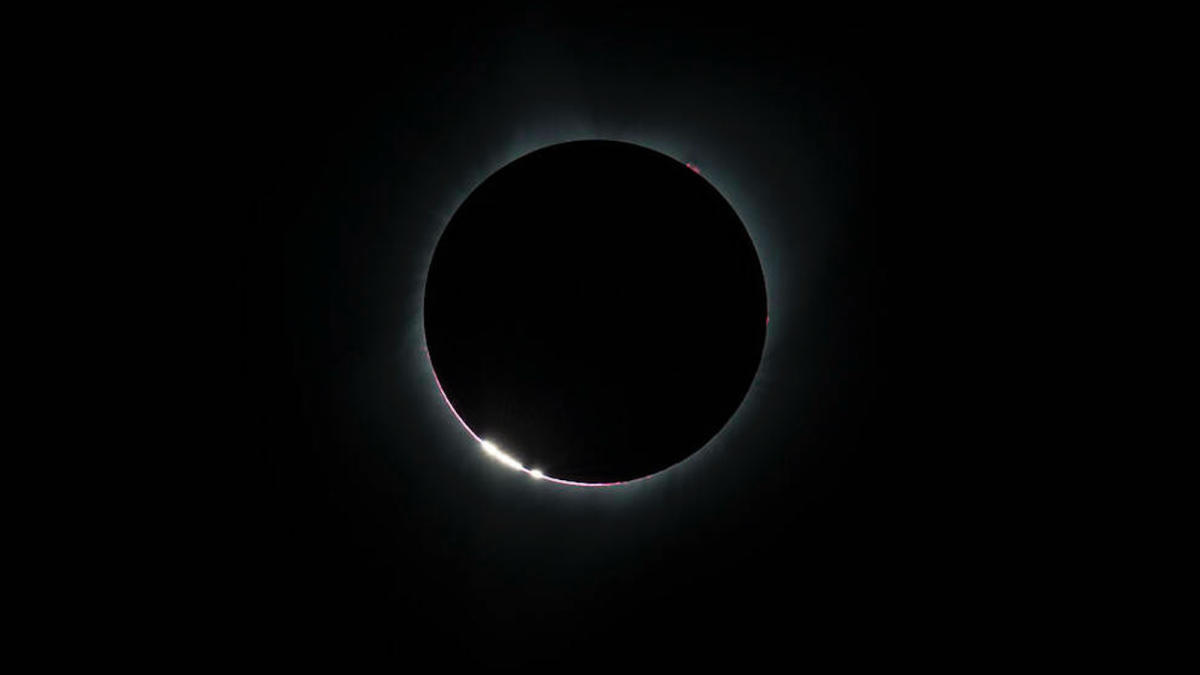If you plan to watch the solar eclipse April 8 at the edge of the totality path, you might want to move further into the shadow.
New amateur calculations of the solar eclipse path suggest that variations in the local terrain might change if you see a total eclipse, or how long the eclipse is experienced, compared to older estimates. The work, first reported in Forbes, is not peer-reviewed, however. So take the findings with a dose of caution.
The next solar eclipse will happen in parts of the United States, Mexico and Canada. An eclipse of the sun happens when the moon passes in front of our solar neighbor. Because the moon is so small, its shadow is narrow indeed and that means totality may only last a few seconds, or minutes, in a tiny part of the Earth’s surface.
Related: April 8 total solar eclipse could bring uptick in fatal car crashes, scientists caution
Amateur John Irwin, on the Besselian Elements website, re-examined the eclipse path with “adjustments that account for the topographic elevation, both around the limb of the moon and on the surface of the Earth.”
While you can click on the embedded map to see the details, Forbes identified 15 areas that may see some differences of the eclipse totality path.
On their Facebook page, the Besselian team describes themselves as “a team of dedicated amateur astronomers, passionate about solar eclipses”, which means their work hasn’t been fact-checked by scientists as you’ll see in areas like professional journal publications.
RELATED STORIES:
— Total solar eclipse 2024: Live updates
— Total solar eclipse April 8, 2024: What you’ll see if you’re outside the path of totality
— Total solar eclipse April 2024: 10 of the biggest cities within in the path of totality
EarthSky, another astronomy publication, asked C. Alex Young, associate director for Science in the heliophysics science division of NASA Goddard Spaceflight Center, about the new findings.
Young didn’t explicitly endorse Besselian’s work, but said he will have a peer-reviewed paper coming out shortly showing the sun is slightly larger than expected. He told EarthSky that finding was uncovered during a previous U.S. total solar eclipse in 2017. That work, he added, may influence future eclipse mappings.
If you’re looking for a takeaway solution, the best idea is to move as far into the region of shadow as you can to avoid any hiccups. And when you’re observing the solar eclipse, make sure you have the right tools to do so.
Our guide on how to observe the sun safely guide tells you what you need to know to look at the sun. We also have a guide to solar eclipse glasses, and how to safely photograph the sun if you’d like to get practicing before the big day.

Dr. Sarah Adams is a scientist and science communicator who makes complex topics accessible to all. Her articles explore breakthroughs in various scientific disciplines, from space exploration to cutting-edge research.






